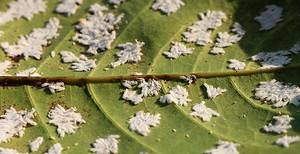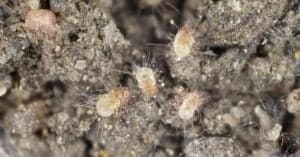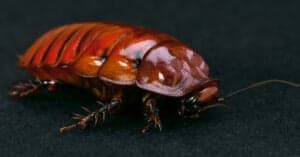A flying termite is the reproductive stage of a termite. Within a colony, swarmers are winged termites whose main role is reproduction. During certain conditions, these winged role players leave their nests to mate and start new colonies. And seeing winged termites can be a sign of infestation, which can cause structural damage to homes and other items.
Bugs can be difficult to tell apart. Before you call a termite control service, check out these six bugs that look like flying termites and how to tell them apart.
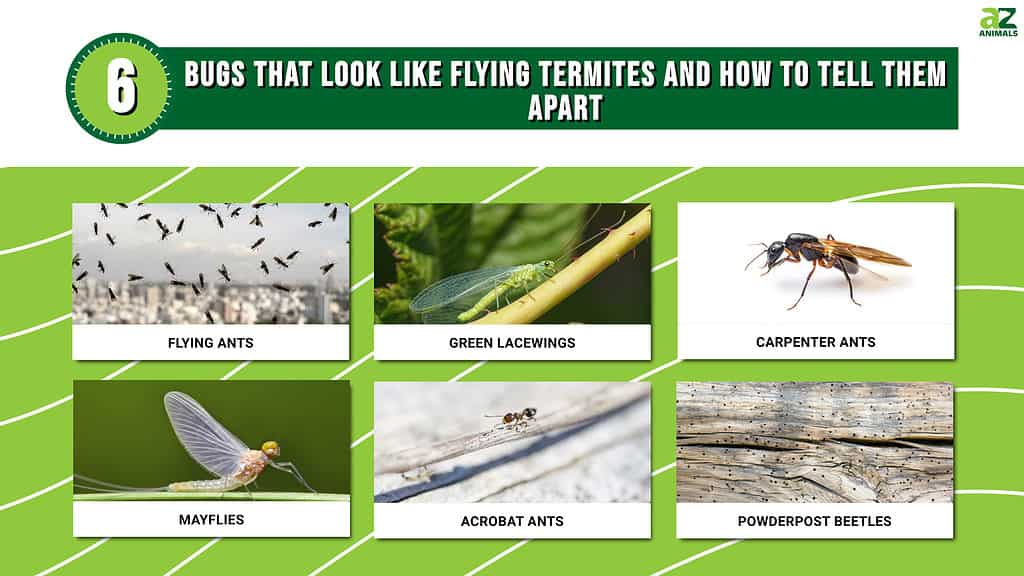
What do Flying Termites Look Like?
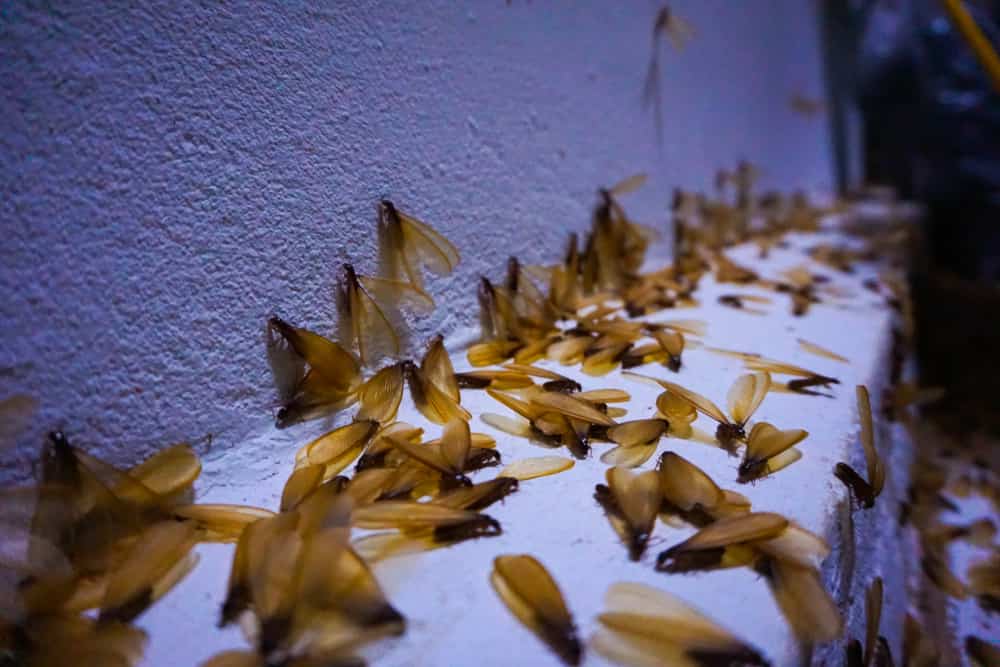
What are the bugs that look like flying termites? Find out now!
©Panomluttikorn Junsiri/Shutterstock.com
Because it’s easy to confuse different bugs, it helps to know what distinctive characteristics to look for. Flying termites have a rectangular body shape with two segments and no distinct waist. They feature short, straight antennae and four long wings of equal size. And they measure ⅜ of an inch long and have a beige/tan color.
You can often find these flying pests emerging from holes in soil or cracks in walls and foundations. And they feed on wood, paper, or plant-based products.
Bugs That Look Like Flying Termites
1. Flying Ants
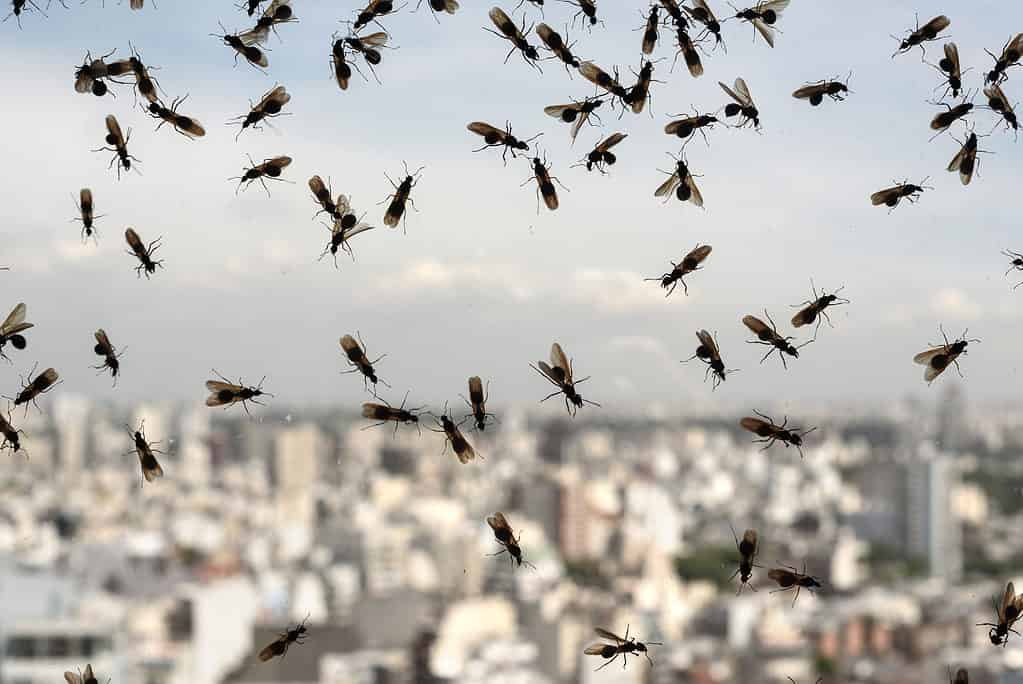
Flying ants are most often mistaken for flying termites
©iStock.com/dit:nickalbi
Similar to flying termites, flying ants are just ants that are sexually mature. They grow wings before finding a new nesting site, where they build their colonies.
Flying ants are the most common bugs that get mistaken for flying termites because of their similar appearance. But flying ants have three distinct body segments, a narrow waist, and bent antennae. They also have longer front wings than back wings. And can grow up to an inch long. Ants are not known to damage wood, but rather they feed on food debris.
2. Green Lacewings
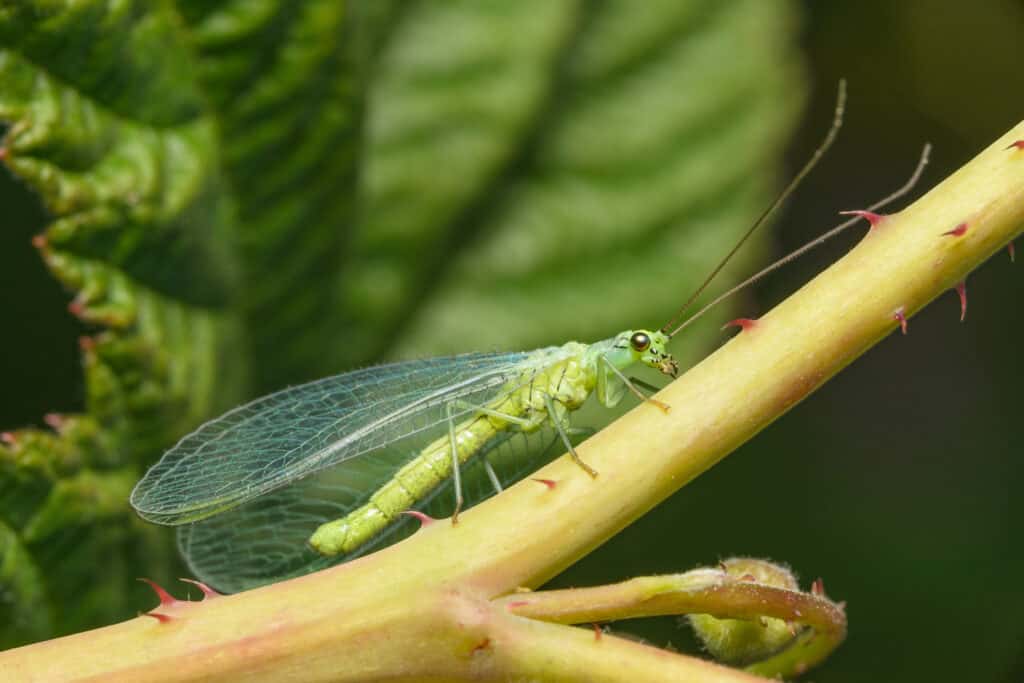
Green lacewings can turn brown during certain times of the year
©iStock.com/Pavel Abramov
While you might think it difficult to mix up a green bug from a brown one, green lacewings can actually turn brown from late fall to early spring. And because of their similar size and long wings, these two species can be easily confused.
Green lacewings are more slender than termites and feature a cylindrical shape. Their wings are also not as long as the flying termite, which can be twice as long as its body. Green lacewings have long, thin antennae and slightly longer front wings. And they live in grassy areas with plenty of vegetation, where they feed on plant nectar and honeydew.
3. Carpenter Ants
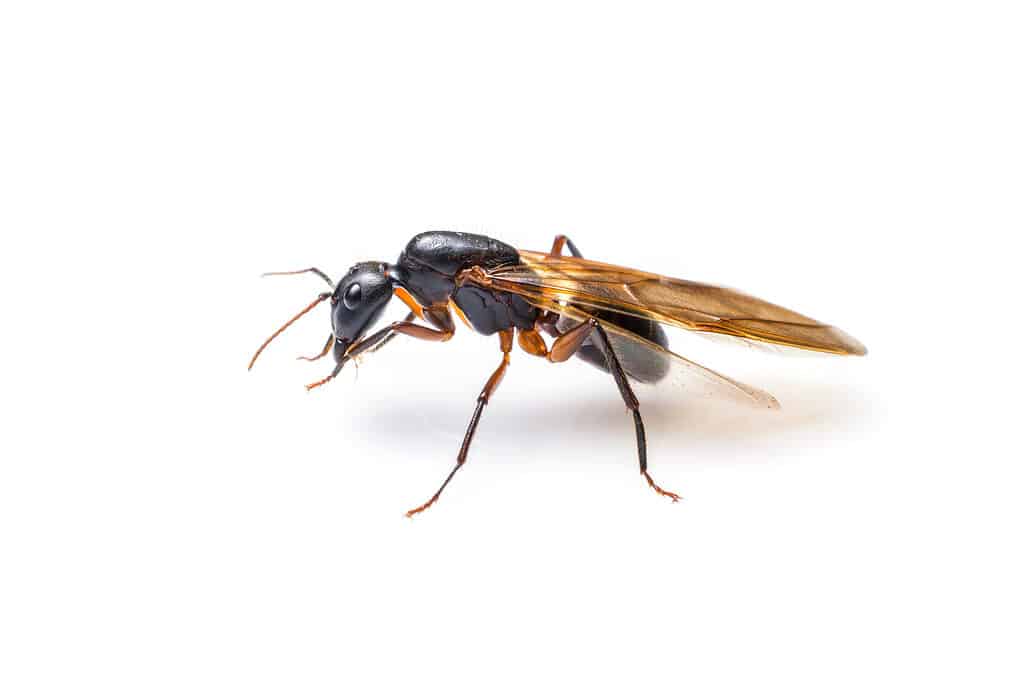
Carpenter ants can bite when disturbed
©iStock.com/lamyai
Like general flying ants, carpenter ants grow wings, fly, and swarm during the mating season, similar to termites. While carpenter ants don’t eat wood, they can cause damage by making tiny holes in structures. And carpenter ants may bite when they are disturbed.
Compared to flying termites, carpenter ants have three segments and tapered waists. They also have shorter wings and elbowed antennae. And while they infest moist and decaying wood, they feed on arthropods, honeydew, and other material.
4. Mayflies
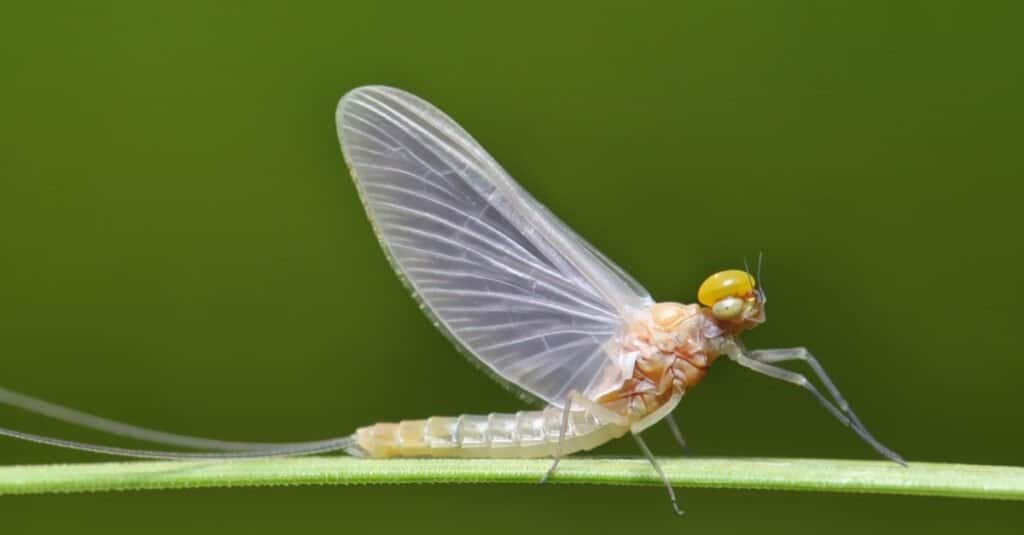
Mayflies are indicators of the pollution of the water, they can only survive in clean waters.
©Achkin/Shutterstock.com
Due to their similar swarming habits, you may confuse the mayfly with the flying termite. However, upon closer inspection, you can easily tell the differences in appearance and location. Mayflies have slim, cylindrical body shapes, three segments, and two to three threadlike tails. Their antennae are also very short, and their front wings are slightly longer. Mayflies also live near water sources, like swamps, rivers, and lakes.
5. Acrobat Ants
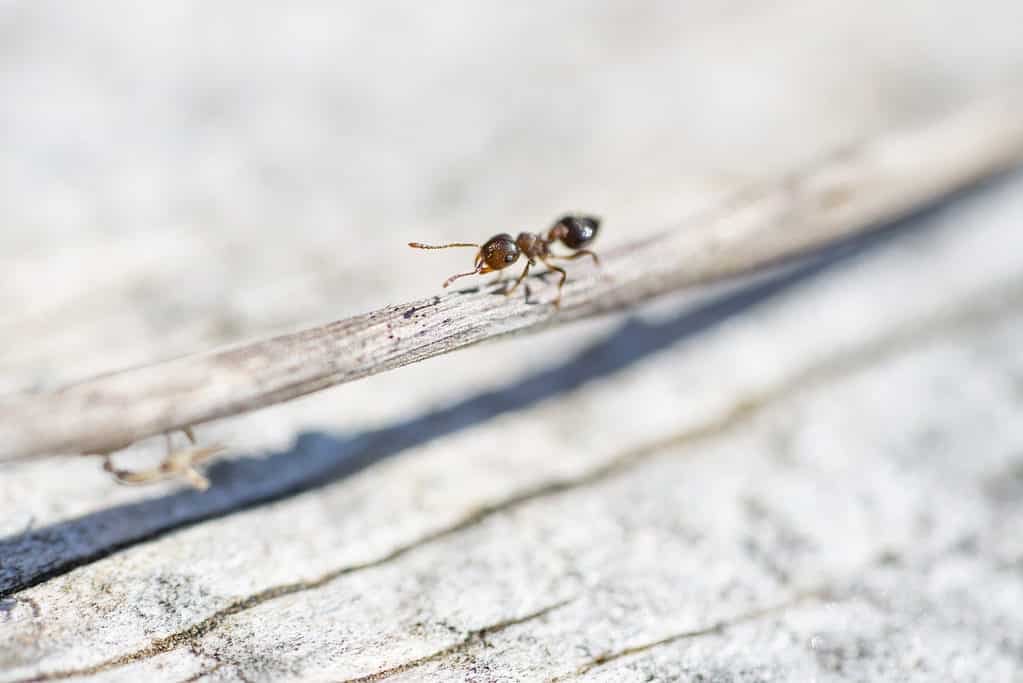
Acrobat ants have heart-shaped abdomens.
©iStock.com/ErikAgar
While acrobat ants can invade the same areas as termites, they have some notable differences. Acrobat ants are only about 2.6 mm long, quite a bit smaller than flying termites. And they live in moist wood and wall cracks, inhabiting holes dug by termites and carpenter ants.
Like other ants, they have three body segments, narrow waits, and elbowed antennae. And they also have large abdomens with spatula-shaped stingers. They don’t feed on wood. Instead, they eat honeydew and insects.
6. Powderpost Beetles
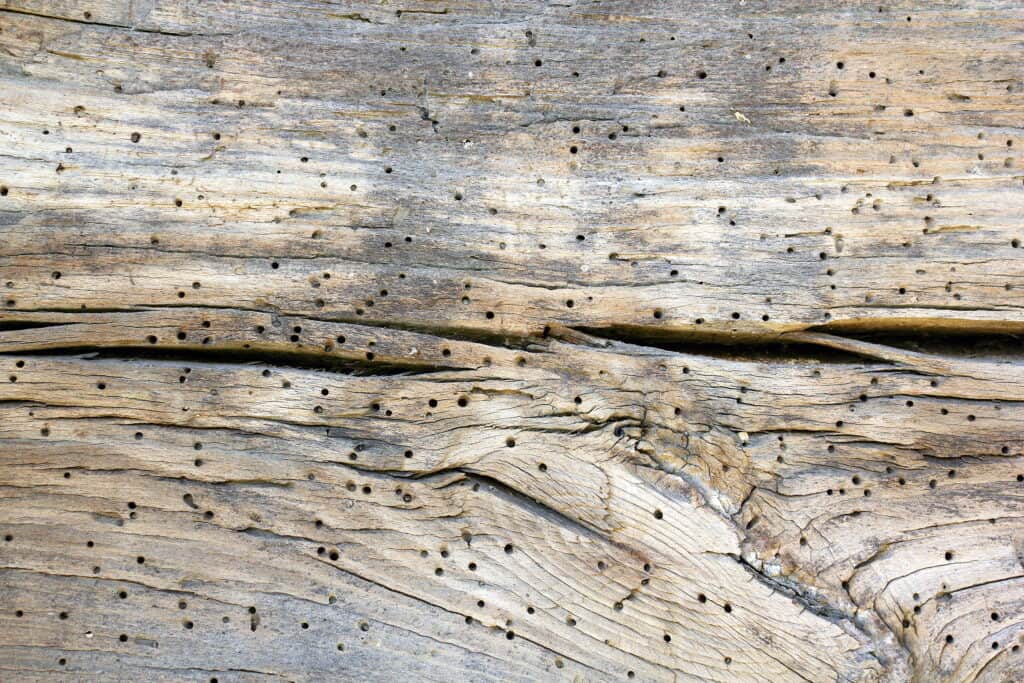
These beetles are considered pests because they slowly damage deciduous trees, reducing the wood to dust.
©taviphoto/Shutterstock.com
The powderpost beetle does not look like a flying termite, but its structural damage can look similar to that of a termite. These beetles lay their eggs in wood holes, and the larvae feed on the wood. The main difference to look for is the presence of holes and sawdust. Powderpost beetles will leave tiny visible holes and sawdust.
Bugs That Look Like Flying Termites: A Recap of the Top 6
| Number | Bugs That Look Like Flying Termites | Difference |
|---|---|---|
| #1 | Flying ants | 3 body segments, narrow waist, longer front wings, feed on food debris |
| #2 | Green lacewings | Slender, cylindrical shape, shorter wings, long antennae, lives in grassy areas |
| #3 | Carpenter ants | 3 body segments, tapered waist, shorter wings, elbowed antennae, feed on arthropods |
| #4 | Mayflies | Cylindrical shapes, several tails, a segmented body, live near water sources |
| #5 | Acrobat ants | 3 body segments, narrow waists, elbowed antennae, spatula-shaped stingers, feed on honeydew and insects |
| #6 | Powderpost beetle | Tiny, visible holes and sawdust |
The photo featured at the top of this post is © Panomluttikorn Junsiri/Shutterstock.com
Thank you for reading! Have some feedback for us? Contact the AZ Animals editorial team.



